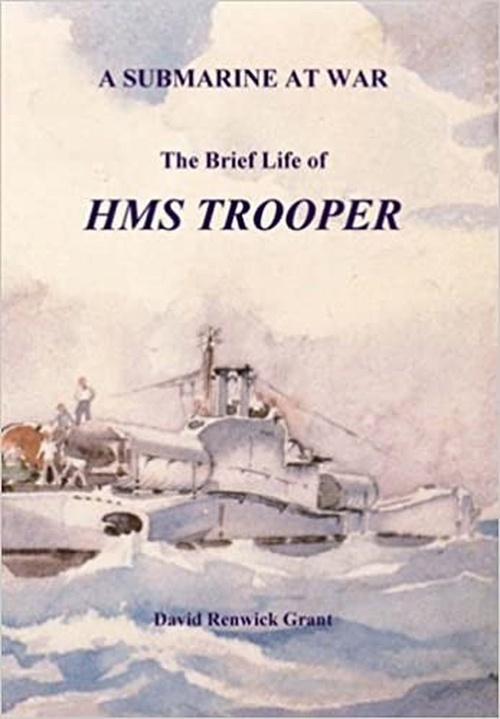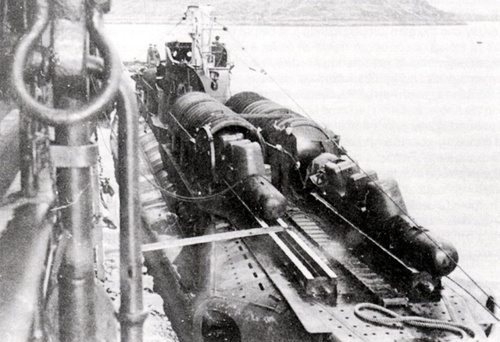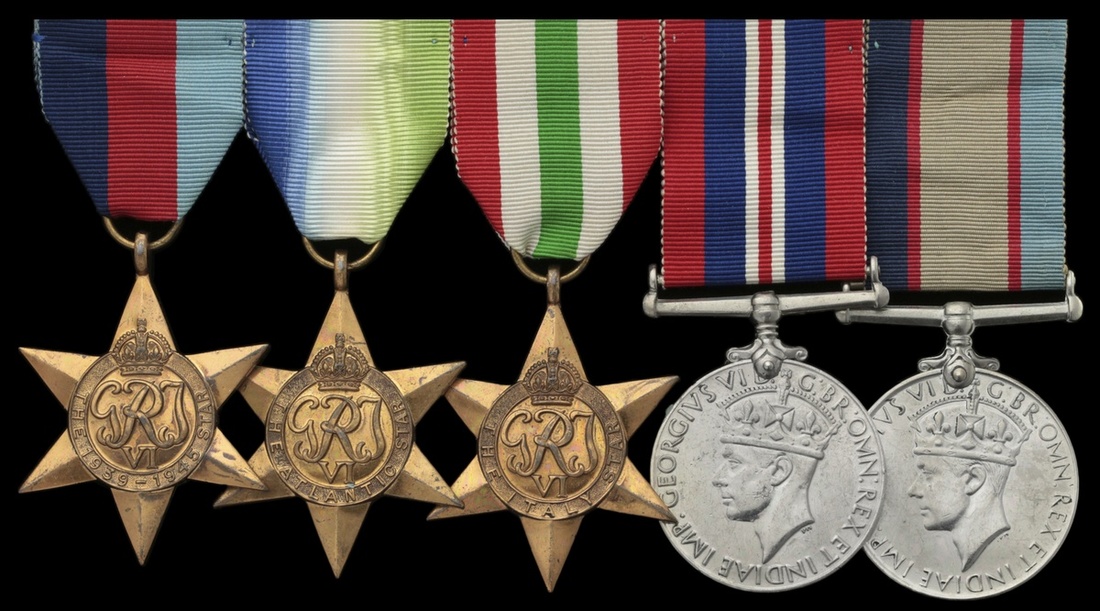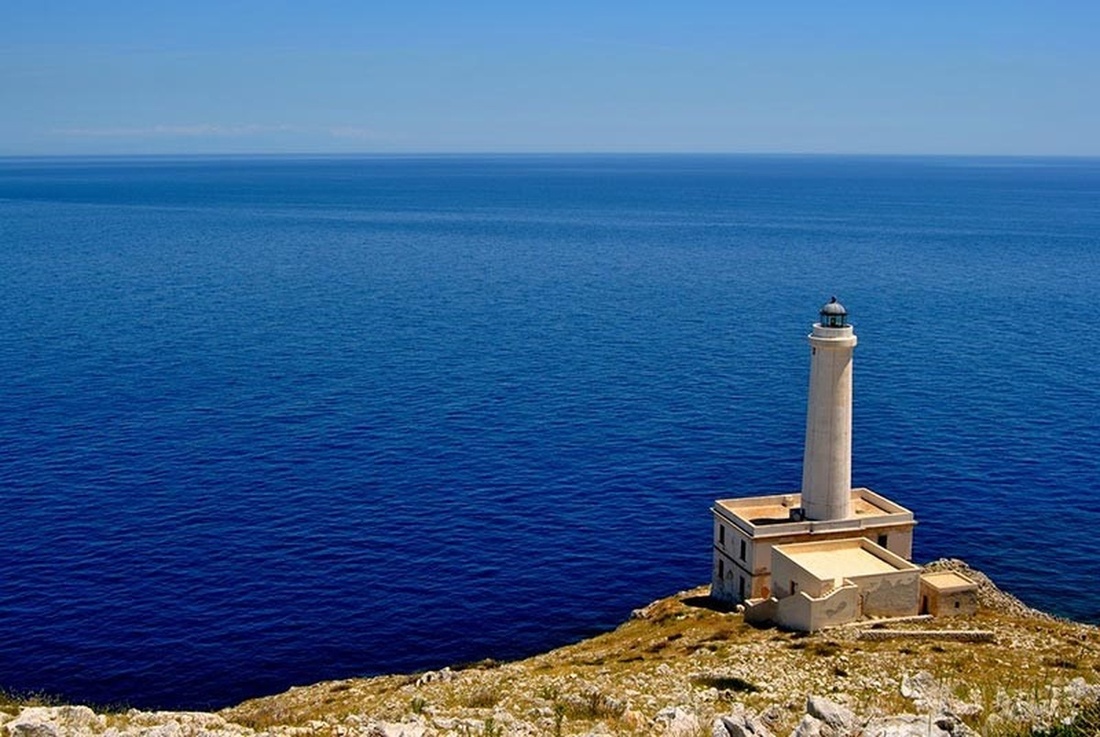Auction: 22003 - Orders, Decorations and Medals
Lot: 414
OCTOBER 1943: TRAGEDY IN THE AEGEAN
'The Italian submarine Pietro Micca was sunk near Santa Maria di Leuca. The vessel was en route to Taranto and sailing on the surface to avoid mines when it fell victim to a torpedo fired from the British submarine H.M.S. Trooper. It sank in less than a minute, leaving eighteen crew struggling in the water. These survivors were rescued by local fishermen. The rest of the crew, 54 in all, went down with the submarine to be entombed in the hull on the ocean floor. It took some hours for the Italian Navy to commence rescue operations. Hydrophones were lowered to detect any sounds coming from inside the hull but only chilling sounds of gunshots were heard. It is believed that those still alive decided to take their own lives rather than die in a slow and terrible agony … '
George Duncan's 'More Maritime Disasters' website describes the terrible end that awaited many employed in the 'Silent Service'; H.M.S. Trooper shared a similar fate in October 1943.
A poignant Second World War submariner's group of five awarded to Sub. Lieutenant J. S. Ryder, Royal Australian Naval Volunteer Reserve, who served in H.M.S. Trooper from May 1943 up until her loss off Greece in October of the same year
In addition to clandestine operations, he was present at the Trooper's victorious 'sub-on-sub' encounter with the Italian submarine Pietro Micca in July 1943
1939-45 Star; Atlantic Star; Italy Star; War Medal 1939-45; Australian Service Medal 1939-45, all officially impressed 'J. S. Ryder, R.A.N.V.R.', extremely fine (5)
John Stuart Ryder was born in Brisbane, Queensland on 9 November 1920 and was a medical student on joining the Royal Australian Naval Volunteer Reserve in June 1941. Having attended a course at H.M.A.S. Rushcutter, the anti-submarine base at Sydney, he was confirmed in the rank of Sub. Lieutenant and embarked for the U.K. in February 1942.
H.M. Submarine Trooper: sub-on-sub victory - S.O.E. mission
One year later, he qualified as a submariner and, in mid-June 1943, he joined H.M. Submarine Trooper at Beirut, then under the command of Lieutenant C. S. G. Clarabut, R.N., owing to her usual skipper - Lieutenant J. S. Wraith, D.S.O., D.S.C., R.N. - being on the sick list. Clarabut had a reputation for his daring and was 'suspected to be a wild devil'.
In July 1943, Trooper departed on her 6th war patrol, when she was ordered to operate in the Adriatic and off the west coast of Greece. On the14th, off Cape Rodini, near Durazzo, Albania, Clarabut launched a torpedo attack on the Italian merchantman Cherso. The torpedoes having missed their target, Clarabut surfaced and engaged with gunfire at a range of 5,400 yards. One hit was obtained but the Cherso appears to have escaped further damage.
Then a 600 ft. schooner appeared on the scene and Clarabut decided to have a go at that, but on asking his officers if they agreed, they begged to differ. One of them, Peter Forbes, wrote in his diary,
' … So we crept off to a safe area in case destroyer came looking for us. This captain certainly is mad, taking stupid risks. We will be lucky to get back to port if he carries on this way. Hope we get our own captain back when we reach port. If we do!'
Trooper was next ordered to patrol the Gulf of Taranto, a timely directive that resulted in a rare 'sub-on-sub' victory for Ryder and his shipmates, in the waters off Santa Maria di Leuca, south of the Straits of Otranto, on the 29th. Trooper's log takes up the story:
'0638 hours - Sighted two objects bearing 095°. Visibility was very poor.
0645 hours - Identified the target as a large submarine of the Italian Marcello-class. Enemy's course was 300°, range 4800 yards. Commenced attack.
0649 hours - The target altered course towards.
0654 hours - Fired six torpedoes from 4600 yards. 3.5 minutes after firing the first torpedo an explosion was heard. Upon returning to periscope depth the submarine was no longer in sight. A small ship was sighted lowering a boat to pick up survivors. It is thought that the enemy submarine must have been sunk.'
It had been. As cited above, it was the Pietro Micca.
Towards the end of August, and with Wraith having resumed command, Trooper embarked on her 7th war patrol, this time in the Aegean. On the 31st she bombarded a large tannery off Karlovassi, Greece - 14 hits obtained - and on the 5 September he sank with gunfire the Greek caique Maria M. and the tug Nikolaos, just north of Skiathos.
Greek tragedy
Trooper's 8th wartime patrol commenced at Beirut, from whence she was ordered to carry out a special mission for the S.O.E. and then patrol the Greek islands of the Dodecanese. Alas, it was to prove her last.
On 30 September, she successfully carried out the S.O.E. element of her mission, delivering three operatives to Kalamos Bay. They were Colonel Diamantopoulos of the Royal Hellenic Artillery (code name "Toby"), 2nd Lieutenant Vey, and a wireless operator (code name "Thomas"), the whole as part of Operations "Eruption" and "Canton".
A fortnight later, Trooper was sighted in Alinda Bay, Leros, by Lieutenant-Commander A. C. C. Seligman, R.N.R., an operative in the secretive Levant Flotilla. In fact, Trooper fired warning shots over Seligman's schooner before Wraith demanded her identity from a loud hailer on the conning tower. Seligman later recalled:
'Then a loud and raucous voice, which I remembered well from lively evenings in the wardroom of the submarine base at Manoel Island, Malta, boomed out over the loud hailer "What ship?" My relief was so overpowering that I let go with the most violent string of expletives I'd ever been sufficiently inspired to put together: "What the blank, blank, blank and blanking blank are you playing at, Johnny Wraith?" This is Levant schooner L58. Exchanging recognition signals would, I believe, have been less convincing. Then the Trooper dived.'
That, tragically, was the last sighting of Trooper. Her exact fate remains unknown but it seems likely she was mined in the same area, the Germans having laid several minefields east of Alinda Bay.
Ryder, who was just 22-years-old, left a widow, Jean Brenda Ryder, of Clayfield, Queensland. Having no known grave, he is commemorated at the Plymouth Naval Memorial; sold with a copy of A Submarine at War - The Brief Life of H.M.S. Trooper, by David Renwick Grant.
Subject to 20% VAT on Buyer’s Premium. For more information please view Terms and Conditions for Buyers.
Sold for
£1,200
Starting price
£520











